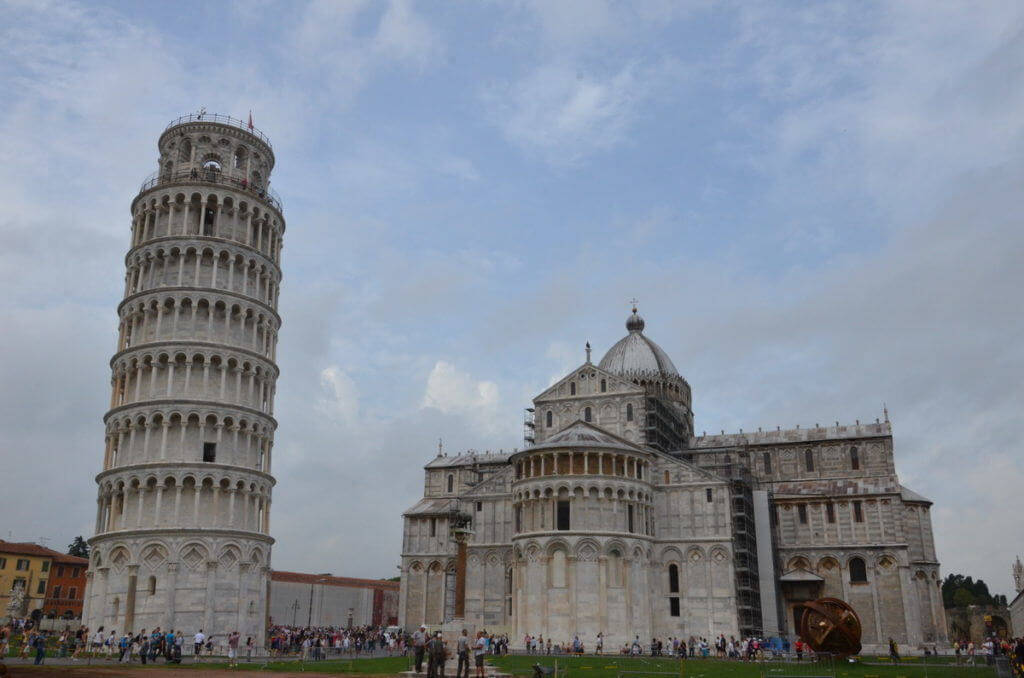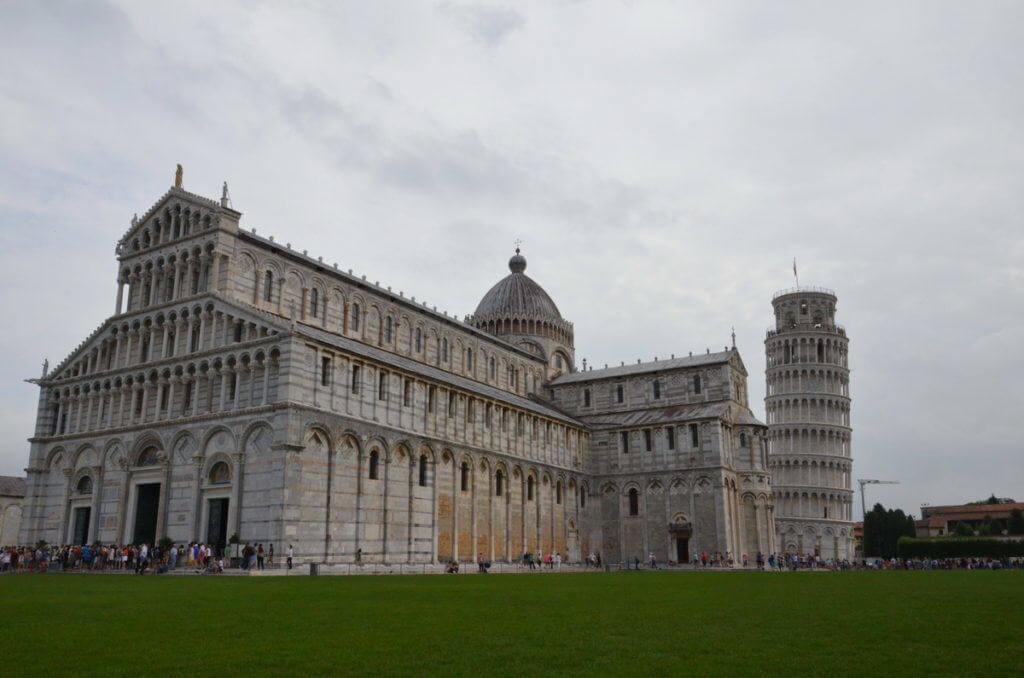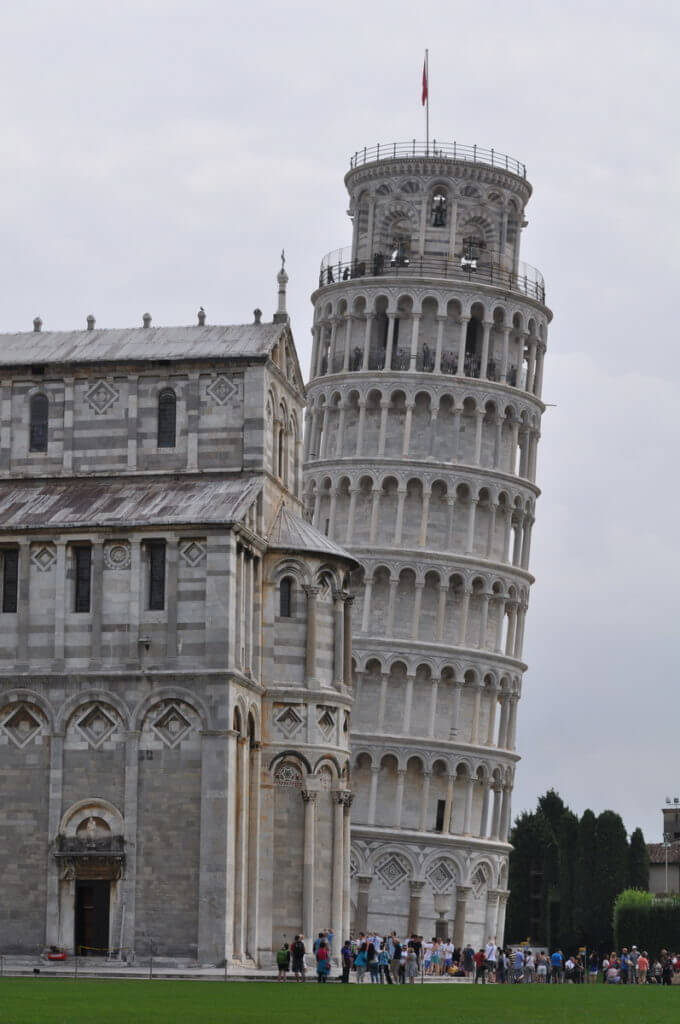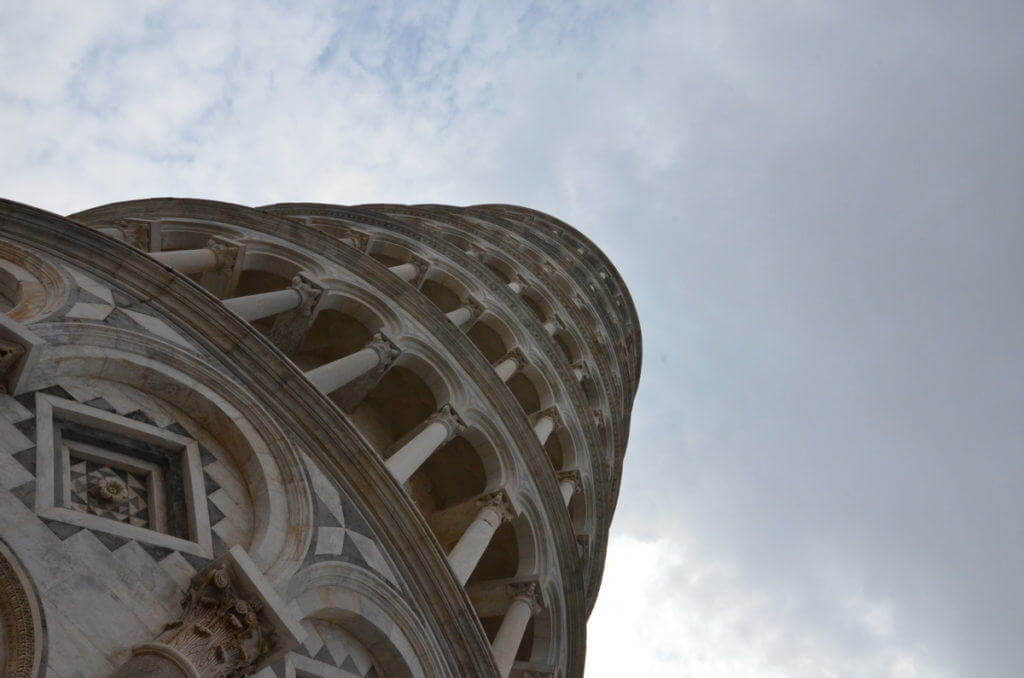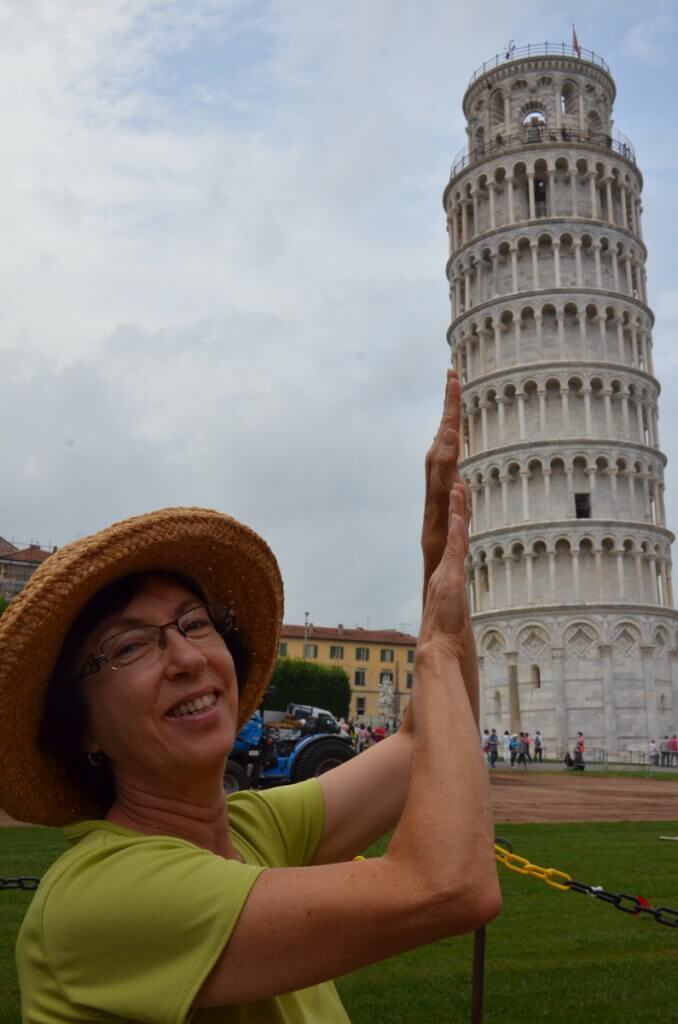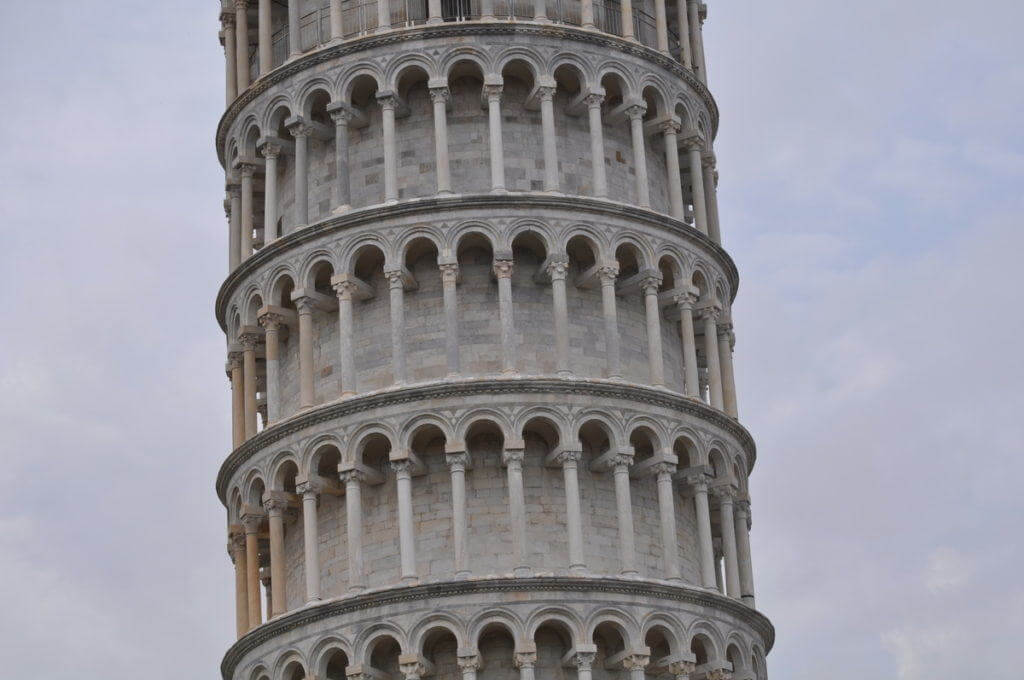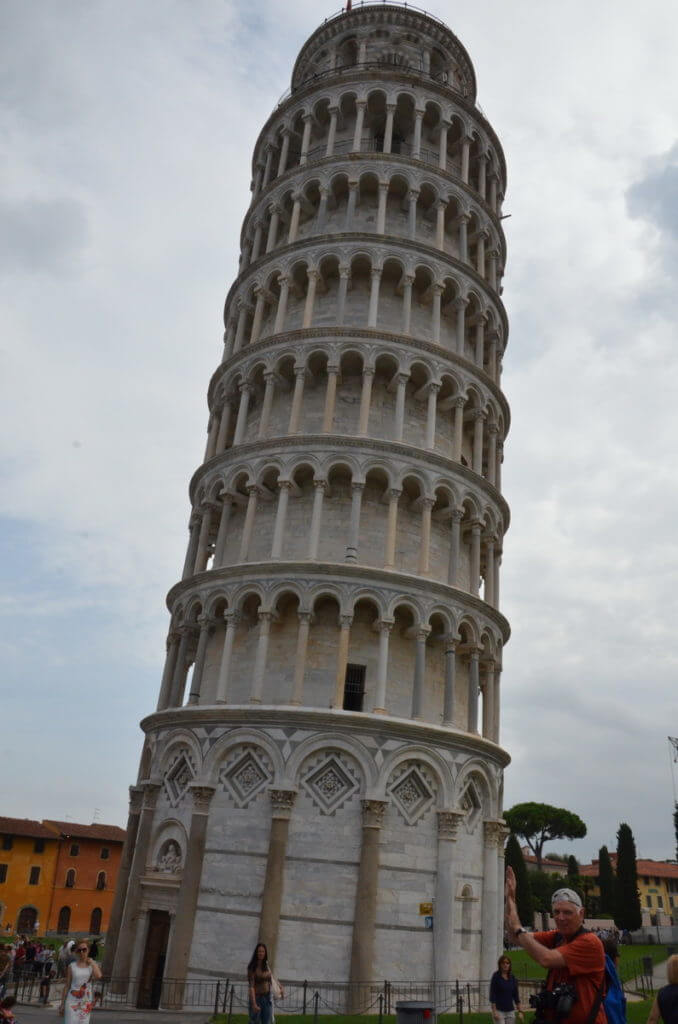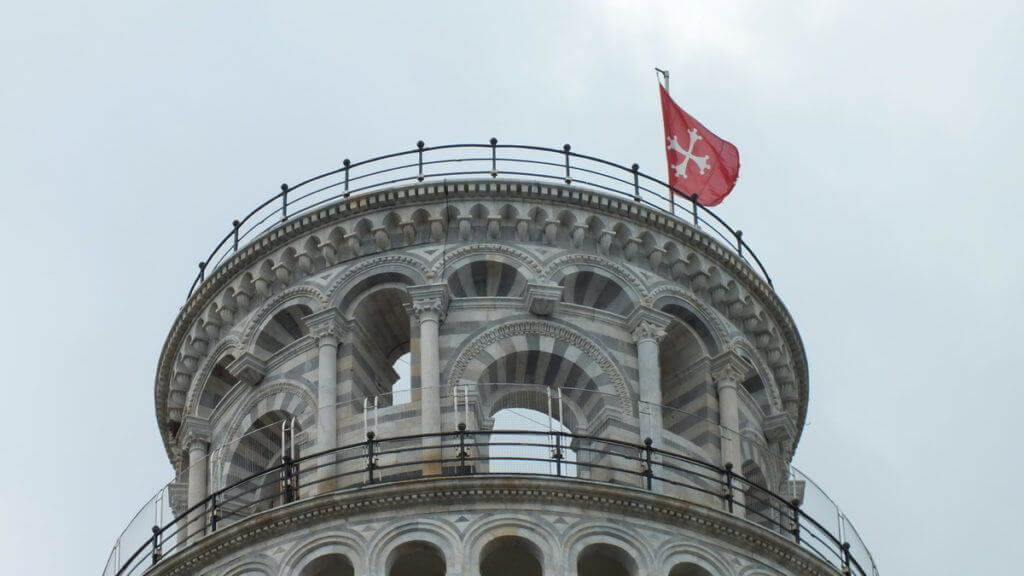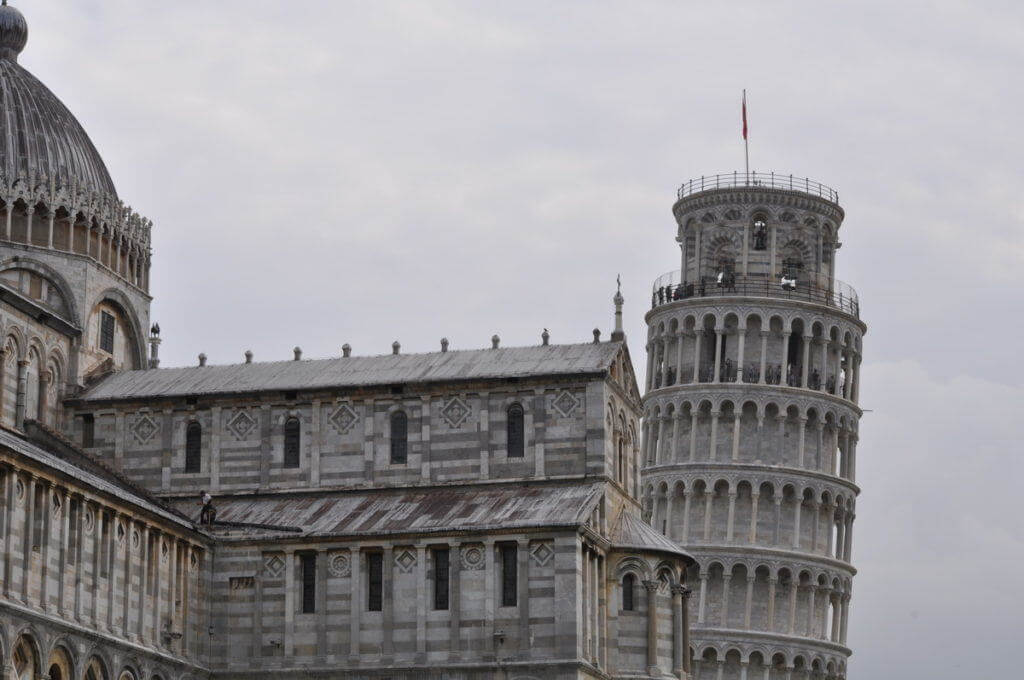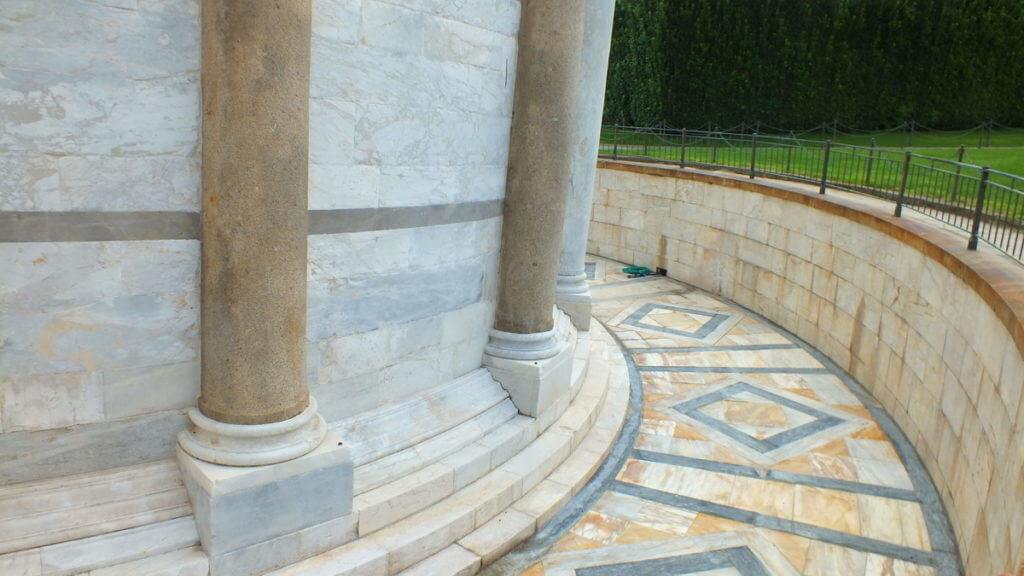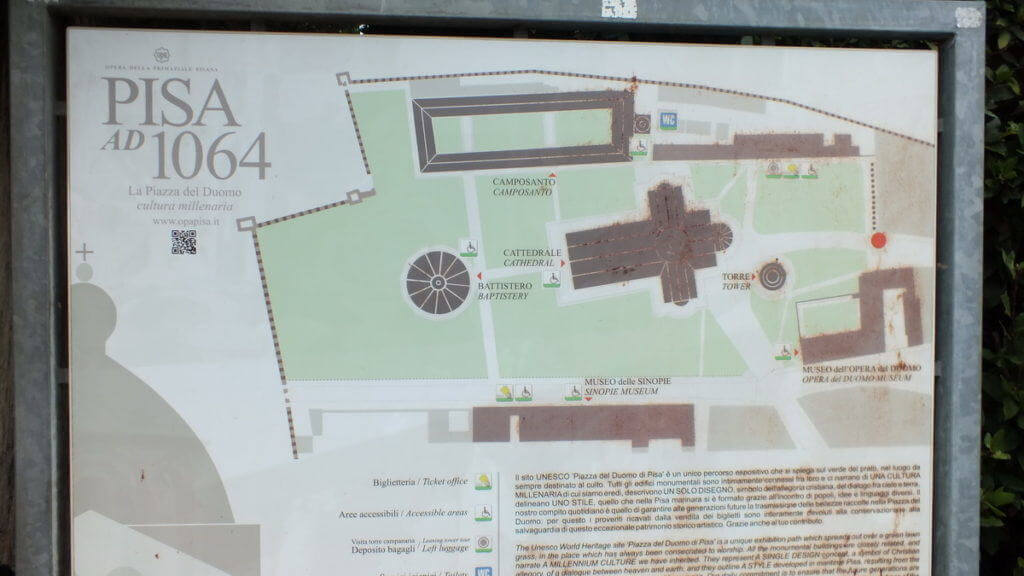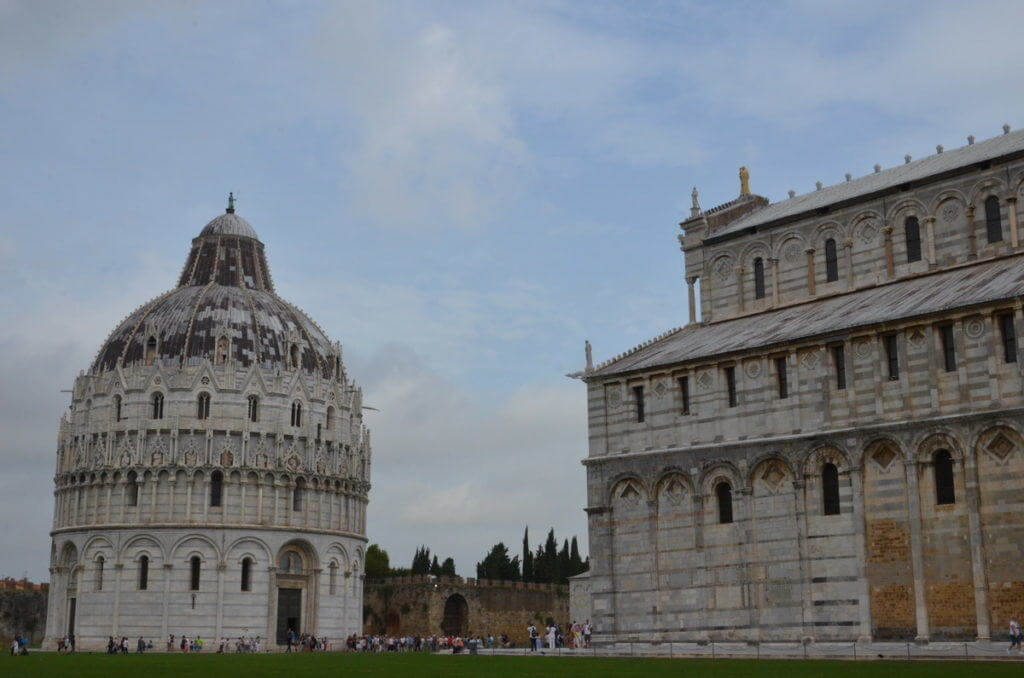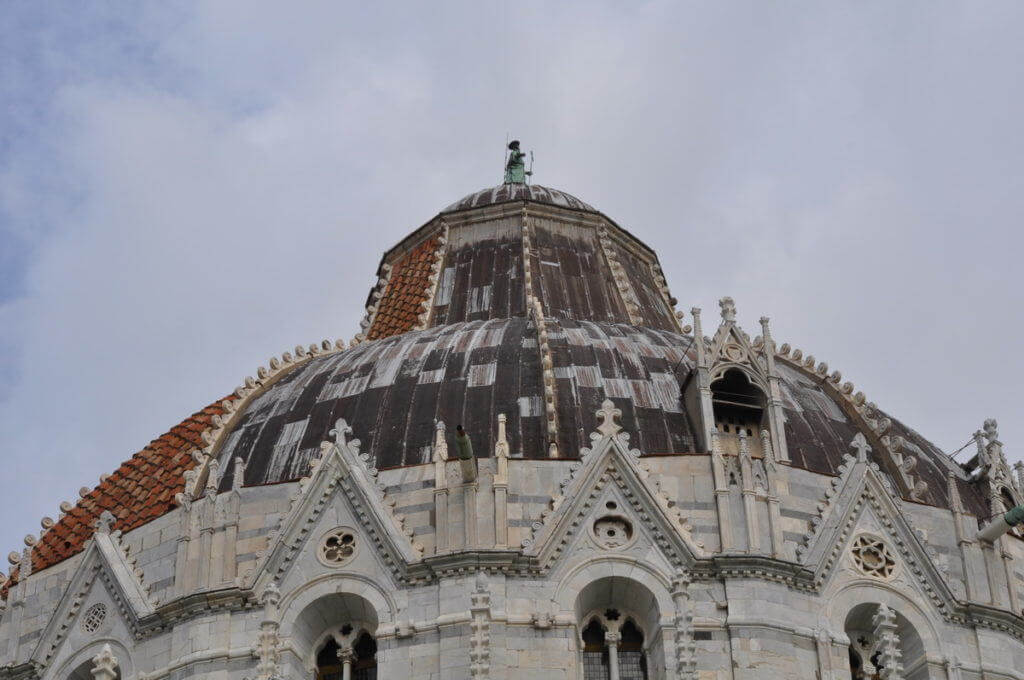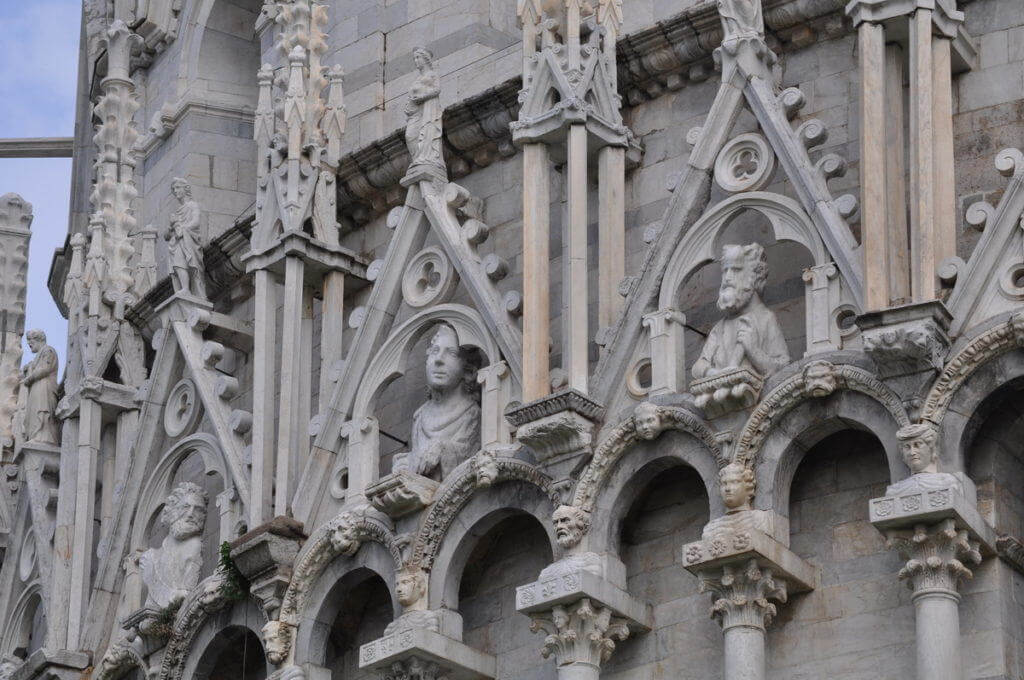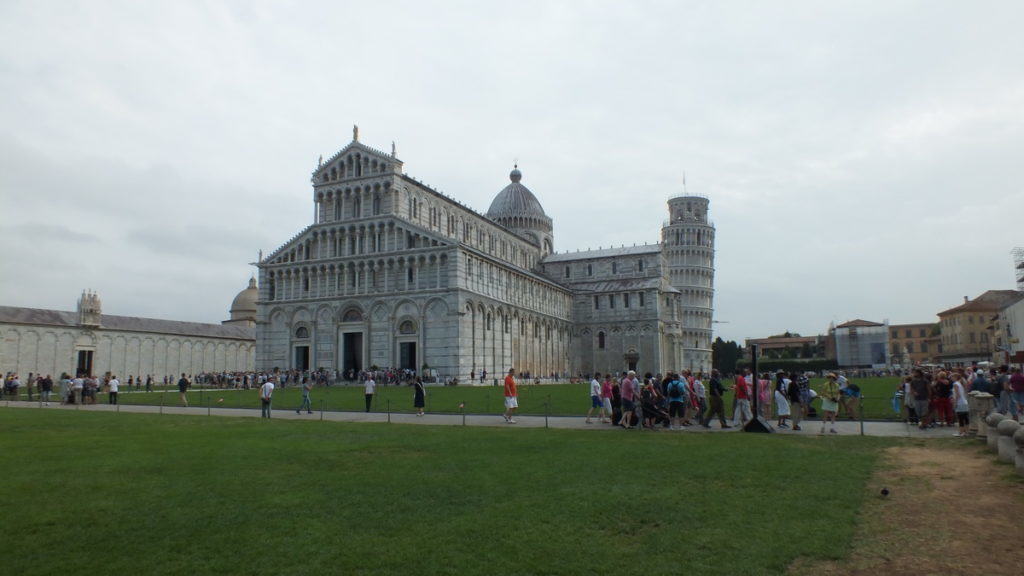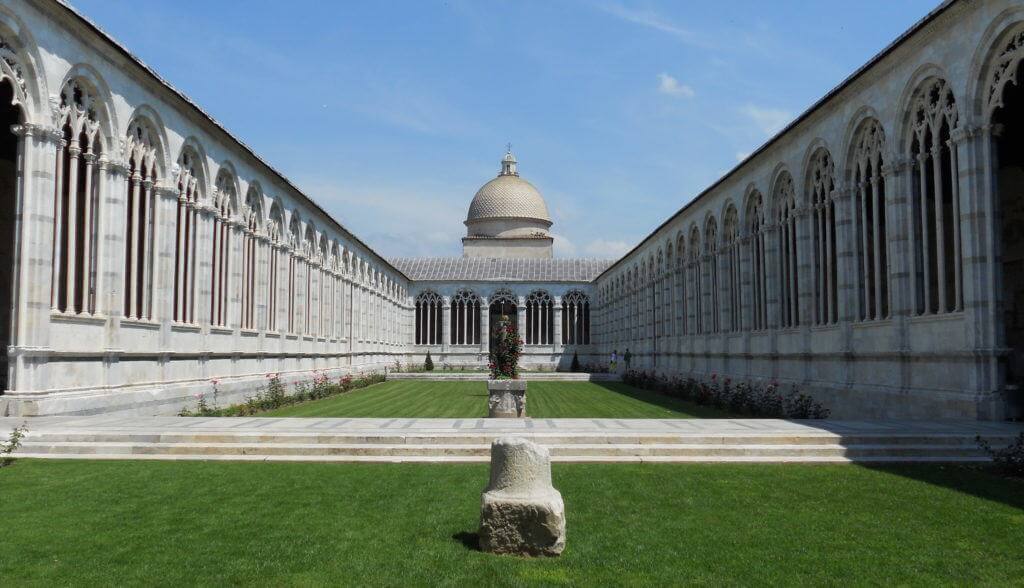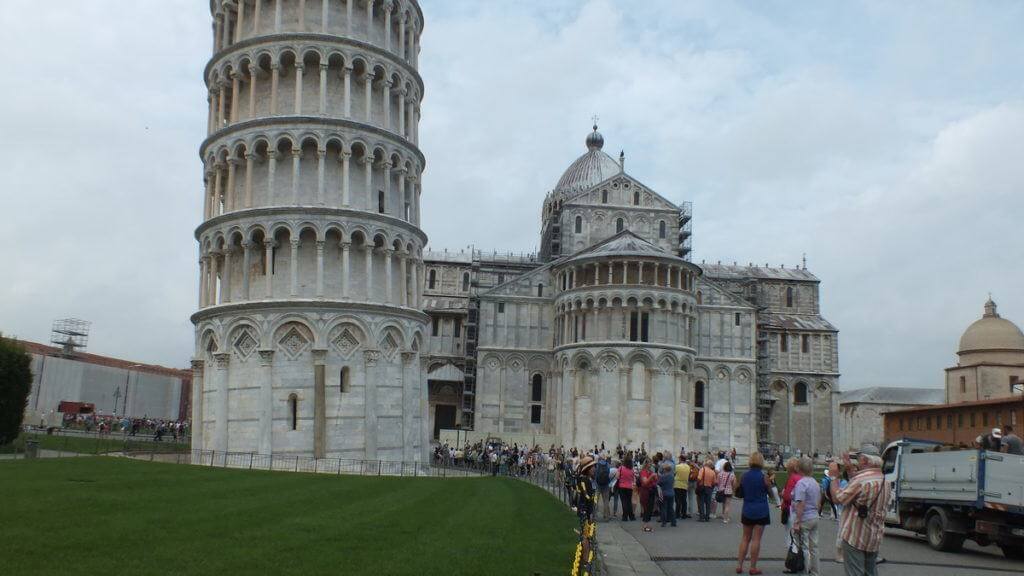The Miracle Of The Leaning Tower of Pisa, And We Give A Hand!
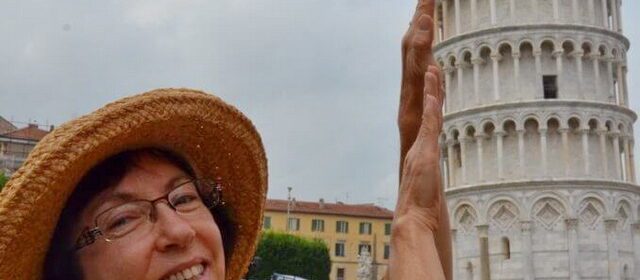
Despite our intentions of arriving at the Leaning Tower of Pisa early in the day, we found ourselves landing at the popular tourist destination alongside hundreds of fellow sightseers. This world-famous freestanding bell tower is considered one of the most remarkable architectural structures from medieval Europe and possibly the tallest bell tower in Europe.
Our day began quite early at 6 a.m. As we were becoming quite familiar with the roads leading north from our little corner of Tuscany, we so saw no reason why we couldn’t be at the Leaning Tower of Pisa by 9 a.m. It was 2 hours distant. Unfortunately, a major problem on the expressway had traffic there stopped and held captive for hours, but our GPS unit foresaw the problem and directed us alternately through the countryside on some pretty obscure routes. We achieved our destination after a long 4 hours.
The Leaning Tower of Pisa, or Tower of Pisa for short, is one of four buildings that make up the cathedral complex known as Square of Miracles. Upon entering the Piazza dei Miracoli, we were confronted by the massive white marble Cathedral of Pisa that dwarfs its own bell tower.
The beautiful romanesque style of architecture used when building not only the Tower but also the Cathedral and the Baptistery resulted in this assemblage of buildings being the most splendid example of its kind in Italy. in the case of the Tower, the combination of rounded arches, sturdy pillars, and white marble have it looking like an elegant giant-sized wedding cake.
The Tower of Pisa was designed to be a perfectly vertical tower, but early during construction, in 1178, when only 3 of the eventual 8 stories were built, the Tower began to lean to one side. A shallow foundation built into soft alluvial silt and marine clay, deposits from the nearby Tuscan Rivers Arno and Serchio, were not sufficient nor stable enough to bear the weight, and the soil shifted.
As a lighthearted jest, I pretend to prop up the short side of the Leaning Tower of Pisa. To look at the Tower, you wouldn’t notice that the stories are taller on the short side than on the uphill side. In one vain attempt to rectify the tilting tower, architects and engineers constructed taller stories on the short side of the Tower as they attempted to compensate for the lean. The extra weight on the short side caused the foundation to sink more and the Tower gained a further lean to the north.
The construction of the Leaning Tower of Pisa was spread over two centuries owing to interruptions caused by wars, debt, and time spent trying to resolve the ever-increasing lean. Begun in 1173, it was not completed until the 14th century, in 1399. It was later conjectured that the very long delays, sometimes a century at a time, actually saved the Tower from collapse by allowing the soft sediments to be compressed during the passage of time.
At the Square of Miracles, the Cathedral of Pisa (Duomo di Pisa) was constructed first, followed by the Pisa Baptistery, the round building with a roof reminiscent of a cupola. The bell tower or campanile was to be the third building completed, but owing to the holdups, the cloistered Cemetery (Campo Santo) was finished ahead of the Tower making it the last element in the ceremonial complex of monuments.
The Leaning Tower of Pisa has 207 columns ranged around its 8 stories, which includes the chamber for its bells.
The bottom story has 15 marble arches whereas each of the remaining 6 stories has 30 arches that encircle the circumference.
The final story is the bell chamber that houses 7 bells, one for each note of the major musical scale. The gray-and-white striped pattern of marble used to face the buildings is shown to great advantage on the 16 marble arches around the bell chamber,
and can be seen clearly on the Cathedral, as well.
Equally as beautiful is the pattern fashioned from marble on the floor of the arcade at the base of the Leaning Tower.
This is a drawing that provides an overview of Square of Miracles and gives some idea as to the relationship and spacing between the buildings.
The Pisa Baptistery of St. John is the largest such building in Italy and is made entirely out of marble. It was here in 1565 that Galileo was baptized.
The Pisa Baptistery originally had a more traditional pyramidal roof, but after the first architect died, the successor designed the top half of the Baptistery in a more Gothic style and added an external rounded roof. Together with the statue of St. John the Baptist on top of the roof, the Baptistery is marginally taller than the Leaning Tower of Pisa.
The Pisa Baptistery combines two styles of architecture, Romanesque on the bottom half with rounded arches, and Gothic on the top portion with pointed arches, illustrating the transition between the two styles. I’m sure the interruption of work also influenced the change in style as the architect who succeeded the first designer wanted to make his own mark.
Flanking the length of the northern wall of the Square of Miracles is the Campo Santo or cemetery. From the outside, it appears unpretentious where it faces the Cathedral.
The Campo Santo’s solid walls are unadorned save for 43 blind arches that allow for no passageways. Only two doors provide entrance into the cemetery making it a “large and dignified, secluded and enclosed place” for devotion to the dead, per Archbishop Frederico Visconti’s wishes.
Inside Campo Santo, the symmetry of the gracefully elongated pair of Gothic marble cloisters lends magnificence to the enclosed burial ground that is disguised as a well tended stretch of grass. A graceful dome overlooks the space, whereas openings with delicate decorative patterns in the stone, meant to frame windows, never were filled with glass.
As Bob and I toured the Square of Miracles, we had no idea that the Cathedral of Pisa and the Baptistery also are sinking so both buildings are on a slight lean, as well. The top of the Tower is displaced horizontally 12 feet from vertical, though at one time it was closer to 17 feet. Declared in 1987 as an UNESCO World Heritage Site, it is Italy’s most beloved architectural accident…and the crowning glory of the Piazza dei Duomo.
Frame To Frame – Bob and Jean

